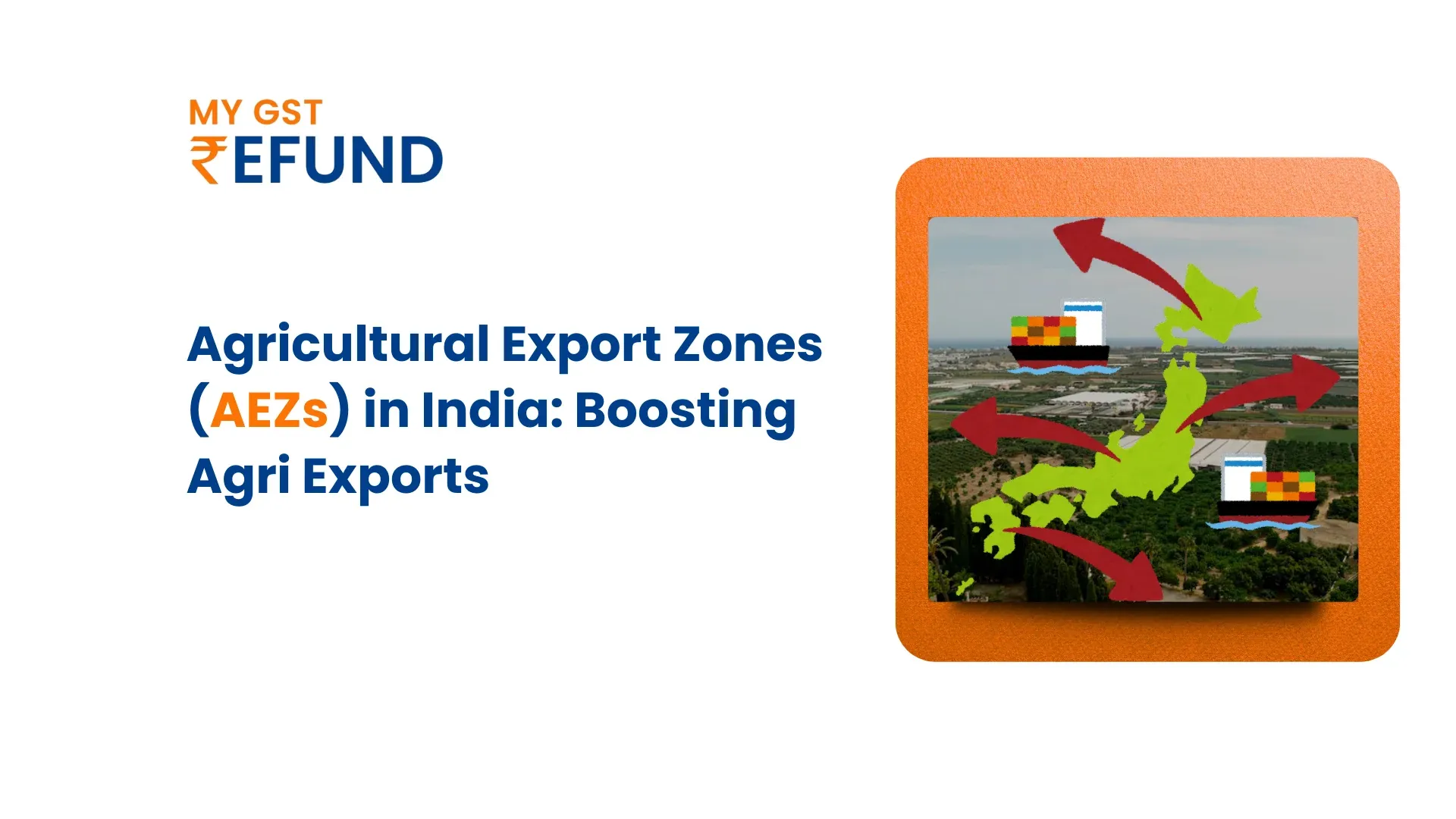Agricultural Export Zones (AEZs) in India: Boosting Agri Exports
Agricultural Export Zones (AEZs) are designated areas in India that promote agricultural exports by focusing on specific crops or agricultural products. They were introduced by the Government of India in 2001 by the Government of India through APEDA to create an integrated supply chain from the farms to the international market.
In short: As per para 11.04 of Chapter 11 of the FTP 2023, “AEZ” means Agricultural Export Zones notified by DGFT in Appendix 2V of Appendices and Aayat Niryat Forms
Key Features
Administration: State Government identifies these zones and manages a comprehensive package of services, including preharvest treatment, processing, packaging, and storage. APEDA assists these efforts.
Export Focus: Each AEZ specializes in a particular agricultural product or group of products that are well-suited to the region's climate and soil.
Incentive: Units within AEZs can import capital goods duty-free under the SPCG (Export Promotion Capital Goods) Scheme, provided they fulfill a specified export obligation. Transport assistance is also available for a variety of products.
Infrastructure and Quality: The goal is to develop essential infrastructure, such as gold storage and processing units, to enhance product quality and meet international standards.
Exporting from India? You’re eligible for an Export GST Refund. Claim it now with MyGSTRefund!
Examples of AEZs in India
Pineapple: Tripura - famous for its pineapples.
Grapes: Nashik and Maharashtra are the major exporters of table grapes.
Mangoes: Chitoor and Kurnool in Andhra Pradesh, which export Mangoes
Tea: Assam, the best tea-producing region
Flowers: Kancheepuram district and Hosur district of Tamil Nadu are major exporters of fresh cut flowers.
Tea: Assam - orthodox and CTC tea.
Cashew: Kerala(Kollam) - aims to process and export cashew nuts to global markets.
Apple: Jammu and Kashmir is famous for its apples.
Spices: Kozhikode has the finest variety of spices, like black pepper and cardamom.
Bamboo: Covers states like Assam, Manipur, Agaland, and is the major exporter of bamboo products.
Vegetables: Uttar Pradesh, Lucknow, promotes and exports vegetables across the country.
Importance of Agricultural Export Zones (AEZs)
Focus on Regional Produce: Each Zone is tailored to focus on specific, regionally grown agricultural commodities.
Increases export potential: They've been a medium for increasing exports to various international markets.
Gives infrastructure and tech support: AEZs benefit from better infrastructure, such as cold storage chains, warehouses, and band processing units, which help meet the global need for fresh and processed agricultural goods.
Role of District Export Promotion Committee (DEPC)
The DEPC identifies major challenges and bottlenecks that hinder exports at the district level. It also identifies the thrust items, Geographical Indication (GI) products, and other agricultural goods with strong export potential for further analysis.
Read More: Top 5 Tips for Choosing the Right Product to Export from India
Registration Process for Agricultural Export Zones (AEZs)
Who can apply?
State government or its designated agencies, as well as private entities like farmer groups or companies, will submit proposals.
Application Submission: A proposal is submitted to the Ministry of Commerce and Industry (specifically APEDA) detailing the produce, potential export markets, required infrastructure, and financial projections.
Feasibility Report: An elaborated feasibility report must accompany the proposal
Approval: APEDA reviews the proposal and grants permission for the AEZ creation.
Infrastructure and Final Registration: After the granting of permission, the necessary infrastructure is established with APEDA's assistance, and the AEZ is formally registered.
Key Documents Required for Registration
Application form (provided by APEDA or state authorities), feasibility report, proof of land ownership or lease agreement, financial details and cost estimates, details of existing infrastructure, or plans for development.
AEZ in India follows a strict set of rules to ensure it functions effectively and meets international export standards.
Compliance Requirements
1) Export Standards
Quality: products must meet international standards like ISO, HACCP, and GLOBAL GAP
Food safety: Regular checking for pesticide residues and adherence to FSSAI guidelines are mandatory.
Phytosanitary: Products must comply with IPCC standards to prevent the spread of plant disease and other infectious pests.
Organic: If applicable, organic produce must be certified under schedules like NPOP.
2) Operational and Infrastructure
Cold Chains: perishable goods require proper cold storage and transport facilities.
Packaging: Packaging material and labeling must meet international standards.
3) Financial and Auditing
Transparency: Regular financial audits are required to ensure transparency in how funds are used
Grant Utilisation: Any government grants must be used accordingly to the specified guidelines for infrastructure and Quality improvement
Record-Keeping: AEZs must maintain records of export volume and value, which are shared with APEDA.
4) Environment and Labour
Large-scale processing units require environmental clearance. AEZs should follow sustainable practices like waste disposal and water conservation. For labour compliance with Labour laws, including minimum wage, is actually mandatory to ensure safe working conditions and fair wages.
5) Training and Capacity Building
AEZs must provide education to farmers and exporters on export processes, quality standards, and better practices to keep stakeholders informed of international trends.
Incentives and Support
Financial Assistance: The government offers grants and subsidies for infrastructure development, like cold storage and processing units.
Tax benefits: Export-oriented businesses in AEZs may receive tax exemption as they are zero-rated.
Market access: APEDA helps AEZs gain market access, connect with foreign buyers, and participate in international trade events.
Termination and Deregistration of AEZs
If an AEZ fails to meet the compliance standards or does not show development in terms of exports, the government may withdraw the AEZ's registration and terminate its status. Regular checking and inspection help in maintaining the integrity and effectiveness of AEZs.
Through following these registration and compliance procedures, India aims to maintain a global competitiveness in agricultural exports and benefit both producers and international buyers. The function of AEZs in promoting India's agricultural export potential is crucial, and their success depends on the effective operation and implementation of these guidelines.
Related Posts







